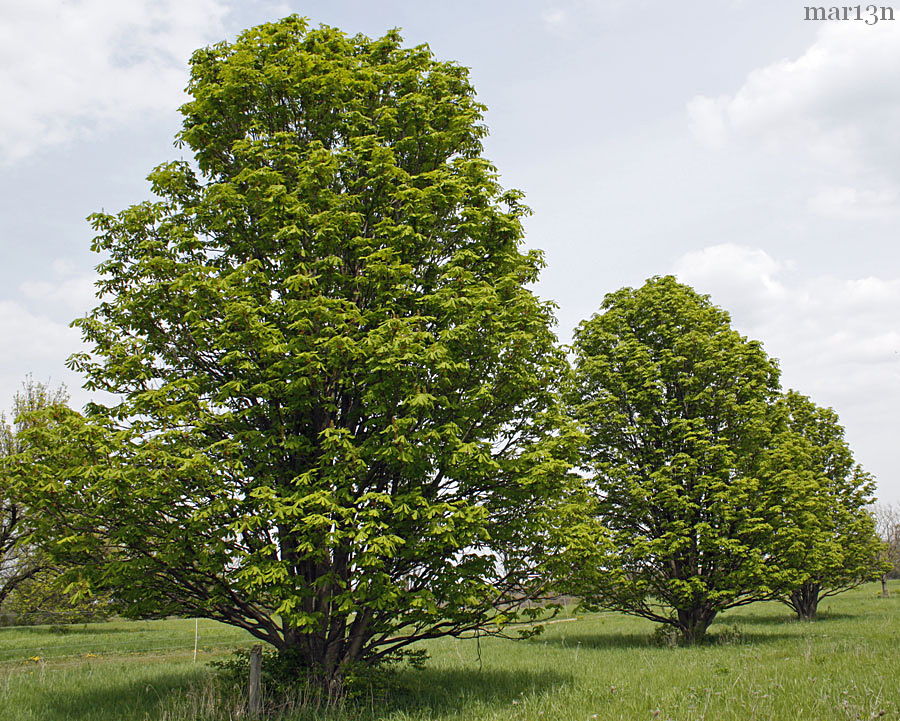 |
Umbrella Horse Chestnut Family Hippocastanaceae Native Range: Albania, northern Greece and Bulgaria |
Custom Search
|

|
Horse chestnuts thrive in any soil, including alkaline, and are common in parks and gardens as an often spectacular specimen planting. The horse chestnut is considered invasive in some regions. Common Names: Hippocastanum, horse chestnut, bongay, konker-tree. Horse chestnut fruit contains an oil used for shining horse's hooves and fetlocks; such is one explanation for the common name. [1]
Description: Deciduous tree reaching 50 to 80 feet in height with a round or oblong crown. Large leaves are opposite, palmately divided with 5 leaflets. Large white flowers with yellow and red spots are produced in spring. Flowers are bisexual and have 5 white petals in large, terminal clusters. The fruit is a round, prickly, leathery capsule enclosing 1 to 3 smooth, chestnut brown seeds. Buds are large brown to nearly black and leaf-scars are large, shield-shaped or irregular. Habitat: It prefers full sun and can grow in clay, loam, sand, acidic, alkaline, or well-drained soils. |
Leaf and flower litter in the summer and fall may be objectionable to some people since the leaves are large and decompose slowly. The nuts make good food for wildlife but you may not want it scattered along city streets. They can make great ammunition for throwing at moving objects, windows and other people so locate it accordingly. Makes a great median street tree when provided with some irrigation during drought.
Red horse chestnut will grow in full sun or light shade and prefers moist, well-drained, acid soils but grows in slightly alkaline soil. Plants are moderately tolerant to drought, wind, and salt and resist the heat of the south very well. It holds up well in urban areas, even in restricted and compacted soil spaces. Red Horsechestnut appears to be less susceptible to disease than either of the parents. Trunk bark may crack when exposed to the direct sun so keep it shaded as much as possible by leaving lower branches on small trees and don’t over-prune the tree, exposing the trunk suddenly to direct sun. [2] |
| References: 1. Umbrella Horse Chestnut, Morton Arboretum acc. 868-60*1, 2 & 3, photos by Bruce Marlin 2. Edward F. Gilman & Dennis G. Watson, USDA Forest Service Fact Sheet ST-65 “Red Horsechestnut” (.pdf) 3. John White and David F. More, The Illustrated Encyclopedia of Trees, 2nd ed. |
 |
Tree Encyclopedia |